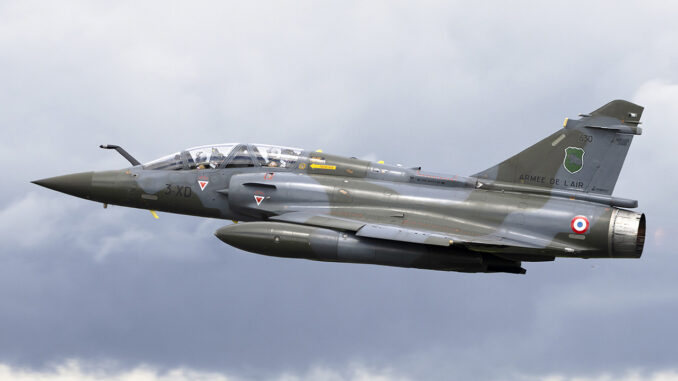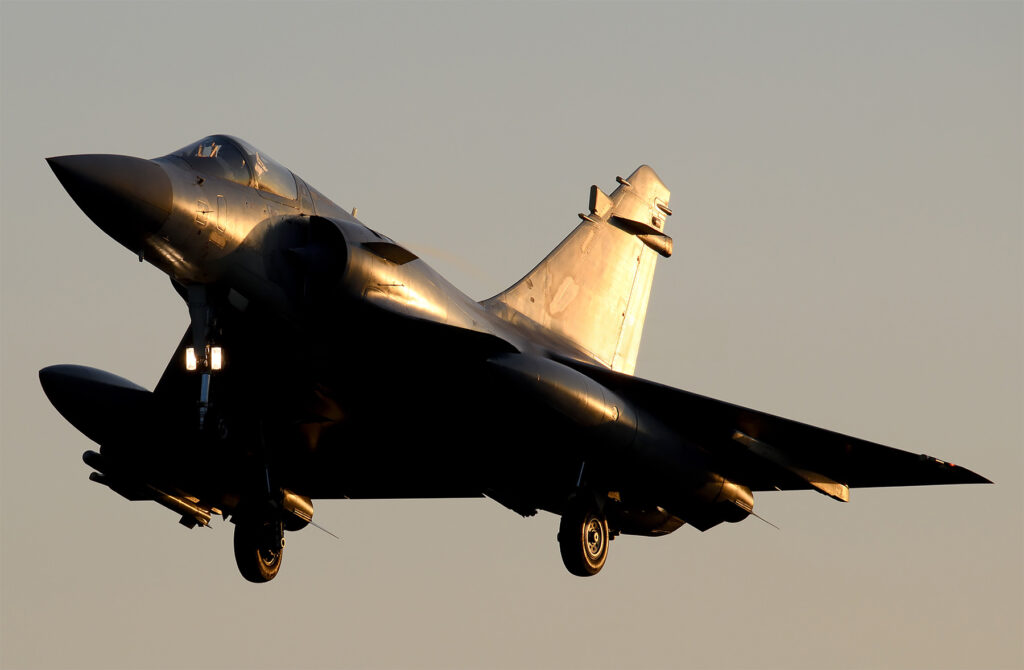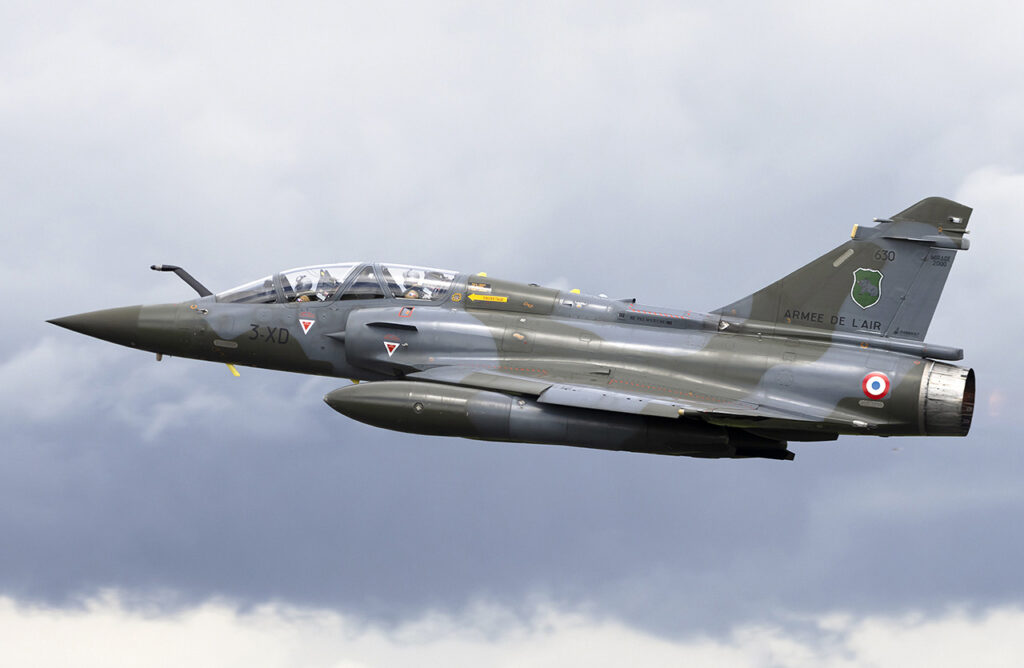
Explore the technical and strategic contributions of the Mirage 2000 by the French Air Force during the Gulf War, focusing on air superiority and ground strike missions.
The Gulf War (1990-1991), also known as Operation Desert Storm, marked a significant period in modern military history, showcasing the extensive use of advanced airpower. Among the coalition forces, the French Air Force deployed the Mirage 2000, a versatile multirole combat aircraft, contributing significantly to the air campaign against Iraq. This article delves into the Mirage 2000’s technical features, operational deployment, strategic advantages, and the broader implications of its use during the conflict.
Technical specifications of the Mirage 2000
The Mirage 2000 is a French multirole fighter designed by Dassault Aviation. Introduced in the late 1970s, it features a delta wing design, enhancing its agility and performance. The aircraft is powered by a single SNECMA M53-P2 turbofan engine, capable of producing 64.3 kN of thrust dry and 95.1 kN with afterburner, allowing it to reach speeds of up to Mach 2.2 at high altitude.
Key armament includes:
- Missiles: Equipped with Matra Super 530D and Magic II air-to-air missiles for aerial combat.
- Bombs: Can carry laser-guided bombs, unguided bombs, and cluster munitions for ground attack missions.
- Cannons: Armed with two 30mm DEFA 554 revolver cannons for close-range engagements.
Advanced avionics such as the Thomson-CSF RDI radar enable effective target tracking and engagement, providing the Mirage 2000 with a robust capability in both air superiority and ground strike roles.

Operational deployment during the Gulf War
During the Gulf War, France’s participation was codified under Operation Daguet. The French Air Force deployed a squadron of Mirage 2000C RDI aircraft, primarily for air superiority missions but also engaged in ground attack roles. These aircraft operated out of bases in Saudi Arabia, performing sorties over Kuwait and southern Iraq.
Combat Air Patrols (CAP)
Combat Air Patrols (CAP) were a crucial aspect of the Mirage 2000C’s missions during the Gulf War. CAP missions involve patrolling a specific area to maintain air superiority and intercept any enemy aircraft attempting to enter the zone. The primary goal is to protect friendly forces and ensure the enemy cannot disrupt operations.
Detailed Explanation:
- Objective: The primary objective of CAP missions is to detect and intercept enemy aircraft before they can pose a threat to coalition assets. This involves constant patrolling and readiness to engage any potential threats.
- Execution: Mirage 2000Cs would take off from their bases and establish a patrol pattern within a designated area. Equipped with advanced radar systems, such as the Thomson-CSF RDI, the Mirage 2000Cs could detect enemy aircraft at considerable distances.
- Engagement: Upon detection of an enemy aircraft, the Mirage 2000Cs would proceed to intercept. Utilizing their Matra Super 530D medium-range air-to-air missiles and Magic II short-range missiles, they could engage and destroy the threat effectively.
Example:
During the Gulf War, Mirage 2000Cs were often tasked with patrolling the airspace over Saudi Arabia and Kuwait. They successfully intercepted several Iraqi aircraft attempting to penetrate the coalition’s defensive perimeter. In one notable instance, a Mirage 2000C engaged and downed an Iraqi Mirage F1, demonstrating the effectiveness of its air-to-air capabilities.
Escort Missions
Escort Missions involved protecting strike packages of allied aircraft during their bombing runs. These missions are essential for ensuring that strike aircraft can reach their targets without being intercepted or attacked by enemy fighters.
Detailed Explanation:
- Objective: The main objective of escort missions is to shield bombers and attack aircraft from enemy fighters, allowing them to complete their missions successfully.
- Execution: Mirage 2000Cs would fly alongside or ahead of the strike packages, using their radar to detect any approaching enemy aircraft. They would engage any threats to prevent them from reaching the bombers.
- Coordination: These missions required precise coordination with other coalition aircraft. Mirage 2000Cs would communicate with AWACS (Airborne Warning and Control System) and other surveillance assets to receive real-time updates on enemy movements.
Example:
During the air campaign, Mirage 2000Cs frequently escorted British Tornado and American F-16 aircraft on their bombing missions over Iraqi targets. On one occasion, a Mirage 2000C thwarted an Iraqi MiG-29 attempting to intercept a strike package, allowing the allied bombers to deliver their payloads unimpeded.
Ground Strikes
Ground Strikes involved attacking strategic targets such as radar installations, missile sites, and supply depots. These missions aimed to cripple the enemy’s ability to operate effectively by targeting critical infrastructure and military assets.
Detailed Explanation:
- Objective: The primary objective of ground strikes is to degrade the enemy’s operational capabilities by destroying vital infrastructure and military assets.
- Execution: Mirage 2000Cs were equipped with various munitions for ground attacks, including laser-guided bombs, cluster bombs, and unguided bombs. They would use their advanced targeting systems to locate and engage targets accurately.
- Precision: The aircraft’s avionics, including the Thomson-CSF RDI radar and laser designation pods, enabled precise targeting, minimizing collateral damage and enhancing mission effectiveness.
Example:
One significant ground strike mission involved Mirage 2000Cs targeting an Iraqi radar installation that was critical for the country’s air defense network. The precise destruction of this installation severely hampered Iraq’s ability to track and engage coalition aircraft, contributing to the overall success of the air campaign.
Strategic advantages and technological impact
The deployment of Mirage 2000s provided several strategic advantages:
- Air Superiority: The Mirage 2000’s advanced radar and missile systems allowed French pilots to effectively counter the Iraqi Air Force, contributing to coalition air dominance.
- Flexibility: Capable of both air-to-air and air-to-ground missions, the Mirage 2000 demonstrated its versatility in adapting to various combat scenarios.
- Interoperability: Operating alongside other coalition aircraft, the Mirage 2000 seamlessly integrated into the larger air campaign, showcasing the benefits of multinational military cooperation.
Technologically, the Mirage 2000’s performance validated the effectiveness of modern avionics and weapon systems in contemporary warfare, influencing future designs and operational doctrines.

Advantages and limitations
Advantages:
- Agility and Speed: The delta wing configuration provides excellent maneuverability, crucial for dogfights and evasive maneuvers.
- Advanced Radar: The RDI radar system enhances target acquisition and tracking capabilities, vital for both air superiority and ground attack missions.
- Multirole Capability: Its ability to switch between air-to-air and air-to-ground roles made it a highly versatile asset.
Limitations:
- Single Engine: While efficient, reliance on a single engine can be a vulnerability if it suffers damage.
- Payload Capacity: Compared to heavier bombers or multirole fighters like the F-15E Strike Eagle, the Mirage 2000’s payload capacity is relatively limited, impacting the scale of its strike capability.
Consequences and legacy
The successful deployment of Mirage 2000s during the Gulf War had several long-term consequences:
- Enhanced Reputation: The aircraft’s performance bolstered its reputation, leading to increased interest and sales on the international market.
- Operational Lessons: The conflict provided valuable insights into the integration of advanced avionics and multirole capabilities, informing future upgrades and variants like the Mirage 2000D and 2000-5.
- Strategic Doctrine: Lessons learned from the Gulf War influenced French and allied air force doctrines, emphasizing the importance of air superiority and precision strikes in modern warfare.
The Mirage 2000 played a crucial role in the coalition’s success during the Gulf War, demonstrating its capabilities in achieving air superiority and executing precise ground strikes. Its deployment underscored the importance of advanced multirole fighters in modern conflicts, shaping future military strategies and technological developments. As a result, the Mirage 2000 remains a significant chapter in the history of aerial warfare, reflecting the evolution of combat aviation in the late 20th century.
War Wings Daily is an independant magazine.